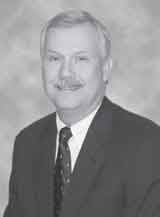Journal of Swine Health and Production
 Roots
RootsWhen I was writing this message in July, the numerous county 4-H fairs in Iowa were just starting. Both of my children have shown lambs for the last few years and have enjoyed the experience greatly. One thing different this year is the fact that my son is showing pigs for the first time. As a former 4-H member and as a parent, I have enjoyed the opportunity to revisit my roots.
One of the drawbacks of working for AASV is that the job has removed me from regular contact with pigs. Having pigs on our farm and guiding my novice son through the process of raising pigs has allowed me to get back in touch with the everyday care and keeping of pigs. Admittedly, raising five pigs does not compare to the millions of pigs in the care of AASV members. What those five pigs did do was allow me some introspection into the importance of individual animal care.
One of the challenges of modern pork production is the balancing of individual animal care with population medicine. Swine veterinarians often deal with large populations of pigs. Health concerns can be spread across thousands of pigs. Necessity and efficiency requires a population approach to prevention, control, and treatment of disease. This is sound medicine supported by research and common sense. The challenge arises when we try to explain population medicine to the public.
Much of the public still perceives veterinarians as care givers to individual animals. It is what they experience as pet owners or when they read about Dr James Herriott. It is difficult to reconcile that perception with the fact that swine veterinarians care for large populations. There is nothing “warm and fuzzy” about population medicine. The animal-rights activists and those opposed to animal agriculture have jumped on this issue with abandon. They equate large populations with “industrialized” production and then demonize it as less humane. Their twisted logic makes it seem that because veterinarians provide care for large populations of pigs, we can not possibly understand the needs of the individual. This portrayal is far from the truth, but unfortunately it persists.
Part of the problem is that veterinarians have not paid much attention to accurately portraying swine medicine as a balance between care for the individual animal and for the population. We may have even drifted into thinking that individual animal care is not as important as it once was. Regardless of our mindset, we must be cognizant that swine medicine still has an important individual-animal component. We must be able to coherently and persuasively espouse this in multiple settings and to varied audiences.
The issue of individual sow stalls is a prime example of where we have failed to communicate how we take care of pigs. An individual stall affords a great deal of one-on-one human-to-pig interaction. Targeted feeding, daily observation, artificial insemination, and routine health maintenance are all opportunities for individual animal care not always found in other sow housing arrangements. Somehow we have failed to impart that message.
Individual care does not stop with the gestation phase. The farrowing process also abounds with individual animal care for the mother and her piglets. Producers and veterinarians routinely observe pigs in all stages of production and care for individuals as needed. Careful clinical observation is an essential skill for any successful veterinarian, and it leads directly to individual care for those animals most in need of it.
Those of us who have grown up in animal agriculture have been blessed to be able to learn about and to see first-hand the care given to animals. We can never take this education and experience for granted, or someone will come along and minimize our role. Whether taking care of five pigs or five thousand pigs, we can‘t ignore our responsibilities as veterinarians. Returning to my roots in 4-H has given me a nudge to recommit to telling the story of how we care for the animals. The next time someone asks me why I am a swine veterinarian, I will tell them “because I care!”
–Tom Burkgren